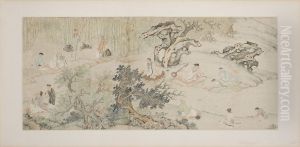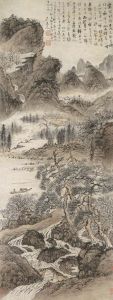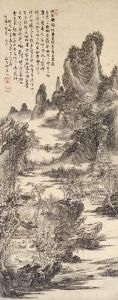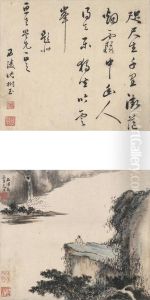Kuncan Paintings
Kuncan, also known as Kun Can, was a Chinese painter of the late Ming and early Qing dynasties. His birth year is traditionally cited as 1612, and he passed away in 1673. Born with the surname Gong, he later adopted the name Kuncan as his sobriquet. He is best known for his landscape paintings, which depict the rugged topography of China's mountains with a powerful and expressive brushwork.
Kuncan became a Buddhist monk in 1646, which significantly influenced his art. His religious devotion is reflected in the transcendental and often solitary nature of his landscapes. His paintings are noted for their bold composition and a strong sense of dynamism, which is achieved through the use of pronounced brushstrokes and contrasting ink washes.
After the fall of the Ming dynasty, Kuncan refused to serve the new Qing rulers, which was a common stance among loyalist artists of the time. He spent much of his life in reclusion, traveling between monasteries in Southeast China. His work was deeply influenced by earlier masters, such as Ni Zan and Huang Gongwang, but Kuncan's style was uniquely his own. He was adept at capturing the spiritual essence of nature, which aligned with his Buddhist beliefs.
Kuncan's life was marked by a dedication to his art and his faith, which is evident in the ethereal quality of his landscapes. His legacy lies in his ability to infuse traditional Chinese landscape painting with a personal and deeply emotive spirit, which has made his work admired for centuries. Today, Kuncan is recognized as one of the great individualist painters of the early Qing dynasty, and his paintings are held in high esteem, both in China and internationally.








